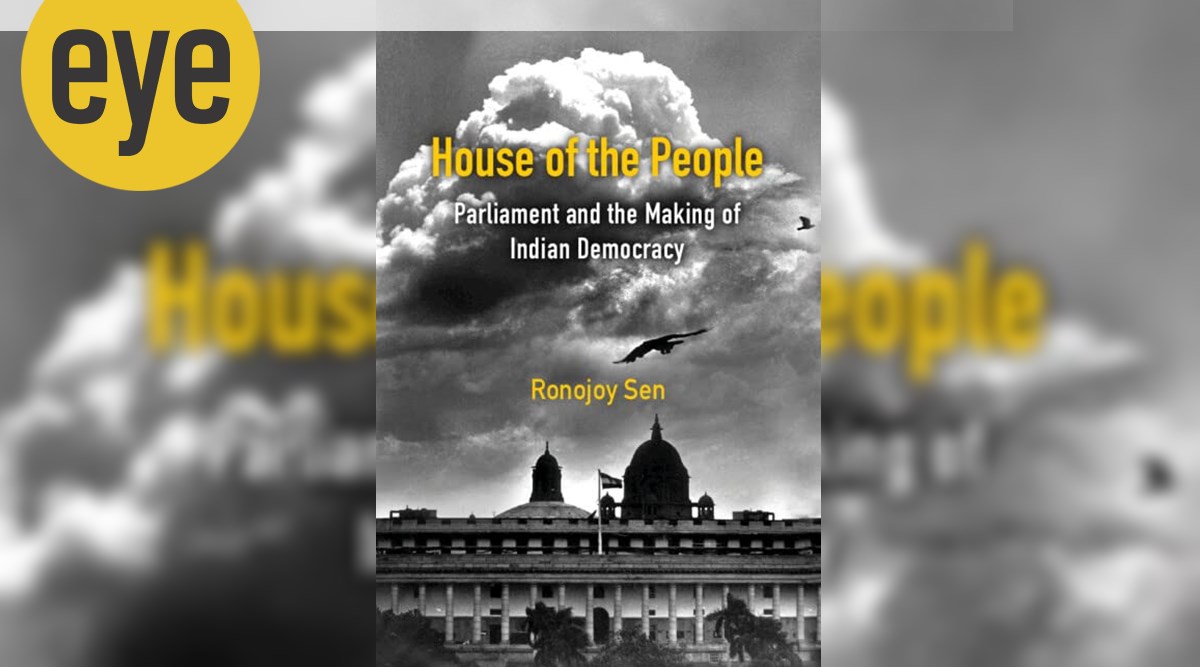The Indian Parliament is the country’s most open institution regarding data about its functioning. It records its daily proceedings meticulously, and reports of its committees are rich in detail and insight. Lok Sabha and Rajya Sabha have made their records electronically accessible by heavily investing in technology. The Parliament website has digitised debates since the central legislature in 1921. The institution is now in the process of opening up 18,000 hours of video proceedings.
While these are recent developments, the Parliament Library, a repository of work done by Parliament, was always open to scholars and researchers. But despite the easy availability of information about the institution, academics have largely ignored it. Ronojoy Sen, in his book House of the People: Parliament and the Making of Indian Democracy, addresses this gap in the scholarship of our national legislature.

A quick look at books about Parliament shows that they fall into three broad categories (Sen also talks about it). First are the ones produced by the institution. These are usually a collection of speeches of its presiding officers/ eminent Members of Parliament (MPs) or are a collation of statistics. Some other individuals have also observed the institution closely, like MPs/ journalists. Their insider accounts are valuable additions to the public understanding of parliamentary functioning. Then, purely academic works analyse the institution through a theoretical lens.
Sen’s book on the Indian Parliament is a cross-over and combines elements of all three groupings. It’s rich in data and history (Disclosure: the book uses some data from PRS Legislative Research). The book demystifies the legislative institution through interviews with MPs and insights from the author’s time as a journalist covering Parliament. The author also analyses the data and historical vignettes, raising critical questions about the work done by the country’s highest law-making body.
The author has organised the book into five chapters and a conclusion. Each chapter covers an essential aspect of our national legislature. The opening chapter provides a history of parliamentary institutions in India. It looks at how successive British legislation, from 1861 to the Government of India Act of 1935, laid the groundwork for the Westminster model of Parliament in India. The chapter also dives into the complexities of constitution formation and the inclusion of personalities like Dr BR Ambedkar and Shyama Prasad Mookerjee in the Constituent Assembly.
The second chapter focuses on the composition of Parliament. It chronicles the changing nature of the institution through data on age, education, gender, caste, religion, criminality and dynasticism of successive Lok Sabha MPs. The next chapter in the book, “Please take your Seat”, tells the story of disorder in our national Parliament. The chapter has interesting anecdotes of MPs resorting to disruptions both inside the legislative chambers and within the precincts of Parliament.
In the last decade, we have witnessed MPs snatching copies of Bills and tearing them on the House floor. This chapter recounts an incident in 1963. On this occasion, the presiding officer had asked an MP to leave the legislative, who then lit a “sacred fire” in the Central Hall of Parliament and burnt a copy of the Official Languages Bill. The chapter highlights that disruptions are not new and examines the causes and institutional response to them. It also tries to answer why there is a rise in parliamentary disorder.
Most Read 1Chandrayaan-3 mission: Dawn breaks on Moon, all eyes on lander, rover to wake up 2As Indo-Canadian relations sour, anxiety grips Indian students, residents who wish to settle in Canada 3Karan Johar says Sanjay Leela Bhansali did not call him after Rocky Aur Rani: ‘He’s never called me but…’ 4Gadar 2 box office collection day 40: Hit by Shah Rukh Khan’s Jawan onslaught, Sunny Deol movie ends BO run with Rs 45 lakh earning 5Shubh’s tour in India cancelled: Why is the Canada-based singer facing the music?
In its conclusion, the chapter observes, “Not only have disruptions become normal in Parliament, but MPs also have increasingly come to see them as standard and entrenched parliamentary practice.” The fourth chapter in the book shines a light on the parliamentary committee system. These mini parliaments do critical work and need more recognition because their meetings are usually non-political and held behind closed doors. But committees are crucial in strengthening every aspect of our national legislature. The chapter shows data on different parameters to evaluate the work of these committees.
The book’s last chapter examines the vexed question of corruption and criminality of our elected representatives. It starts with a dialogue from the movie Paan Singh Tomar (2012): “In the ravines you get rebels, dacoits you encounter in Parliament.” It also touches on how the anti-defection law has been ineffective in preventing legislators from shifting their political loyalties. The book’s conclusion ties all the chapters together in three key questions. First, about the crisis of democracy in our country, then, about the diminishing nature of Parliament and finally, as the author phrases it, the “Requiem for Parliament”.
Also ReadRomila Thapar: ‘Majoritarianism can easily become – and often does — an a…Education Minister launches comic book to sensitise adolescents on holist…From Amitav Ghosh to Perumal Murugan: 15 best books on India'The Hero of Tiger Hill': Book tells story of India's youngest Param Vir …
ALSO READ | National Library to upload books on Indian culture on webHouse of the People is written in a manner which makes it accessible to non-academic readers who are interested in the intricacies of our Parliament. It has carefully curated images and figures. Each chapter has exhaustive notes that both researchers and casual readers will find invaluable in further exploring the story of our Parliament.The writer is head of outreach, PRS Legislative Research


